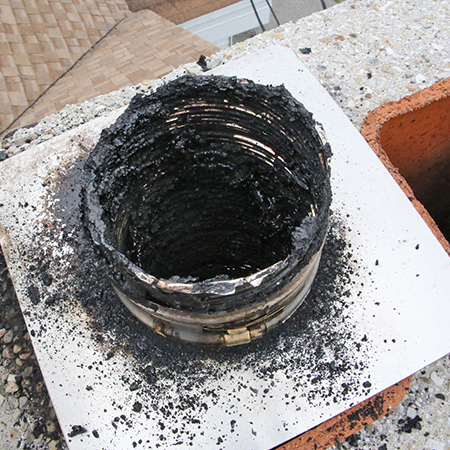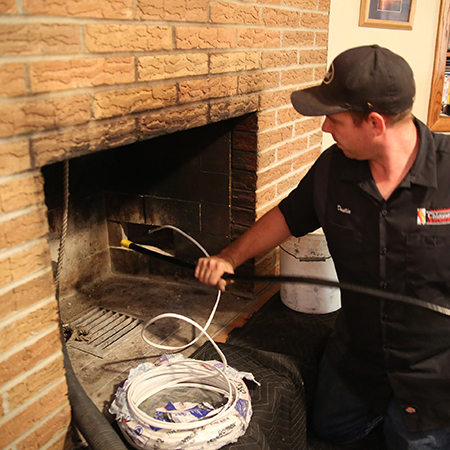Fireplace Safety & Regular Chimney Cleaning: Why it Matters
 Fireplaces and chimneys, like many items and appliances in your home, need periodic maintenance. Left unattended year after year, a chimney can become dangerous to use and to live around. Here are some of the reasons fireplace safety and chimney cleaning are so important.
Fireplaces and chimneys, like many items and appliances in your home, need periodic maintenance. Left unattended year after year, a chimney can become dangerous to use and to live around. Here are some of the reasons fireplace safety and chimney cleaning are so important.
Flammable creosote
Wood-burning fireplaces create a substance called creosote, which clings to the chimney liner and builds up over time. Creosote is highly flammable and causes most of the chimney fires in the U.S. each year.
You’ll notice a full-on chimney fire quickly. But many creosote-fueled chimney fires are smaller and extinguish on their own before the homeowner realizes there has been a fire. While a “minor” chimney fire probably won’t destroy your home, it very easily can cause incremental damage to your chimney liner and the chimney’s masonry, which can lead to big, expensive problems. Annual chimney inspections and chimney sweep services can alleviate the danger of excess creosote in your chimney.
Chimney sweeps clean out obstructions
Another problem often found inside chimneys is an obstruction caused by tree debris, dust/dirt, small-animal nests and dead small animals that have been unable to get out of the flue. Any obstruction in your chimney will have an effect on how well smoke drafts. A severe blockage can cause smoke to back up into your home and carry with it dangerous toxins such as carbon monoxide, which is invisible, odorless and potentially fatal to humans and pets. Certified chimney cleaning technicians are able to remove all obstructions inside your flue. If you don’t have a chimney cap, one can be installed to prevent further intrusions of debris and wildlife.
General fireplace safety tips
 The way you use your fireplace can directly affect the safety of it and your chimney. Follow these four tips to get the most out of your fireplace and ensure the safety of everyone who lives in your home.
The way you use your fireplace can directly affect the safety of it and your chimney. Follow these four tips to get the most out of your fireplace and ensure the safety of everyone who lives in your home.
- Burn only dry wood: Seasoned (dry) wood burns hotter and more completely than damp (unseasoned) wood. In addition, dry wood creates much less smoke and therefore less creosote.
- Stack logs correctly: The right way to stack logs is to leave sufficient “breathing room” between them. Fires that don’t get enough air (oxygen) tend to be a lot smokier and won’t thoroughly burn all the logs.
- Don’t use accelerants to start a fire: Kindling (small scraps of wood and/or balled-up newspaper) placed on top of the log stack is the best way to get a fire started. Never use lighter fluid, charcoal starter fluid, gasoline or any other accelerant to start a fire.
- Burn nothing but wood logs: Do not burn magazines, household waste, painted pieces of wood, clothing or anything else other than wood logs in your fireplace. If you do, the fire will become dangerously hot and emit large amounts of harmful toxins within the smoke.
Chimney Specialists of Highland, WI, is here to help with all your fireplace and chimney needs. Our nationally certified technicians perform thorough chimney cleaning, chimney inspections, chimney repairs and chimney rebuilding to keep your fireplace and chimney in top shape. If you have questions or would like to schedule an appointment, call (608) 929-4887.







